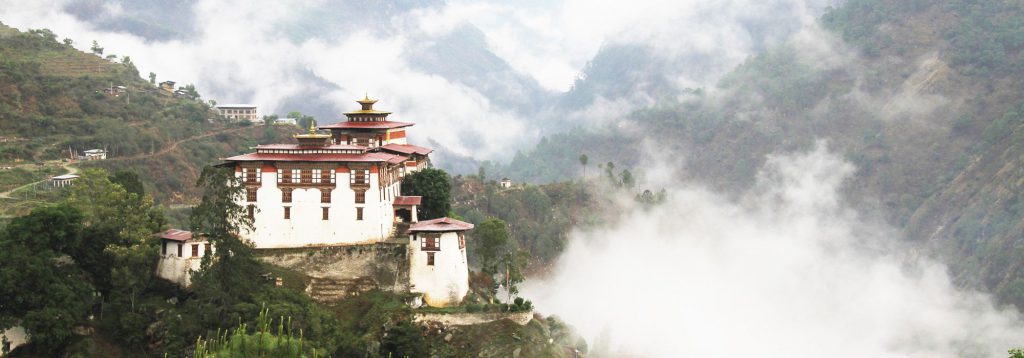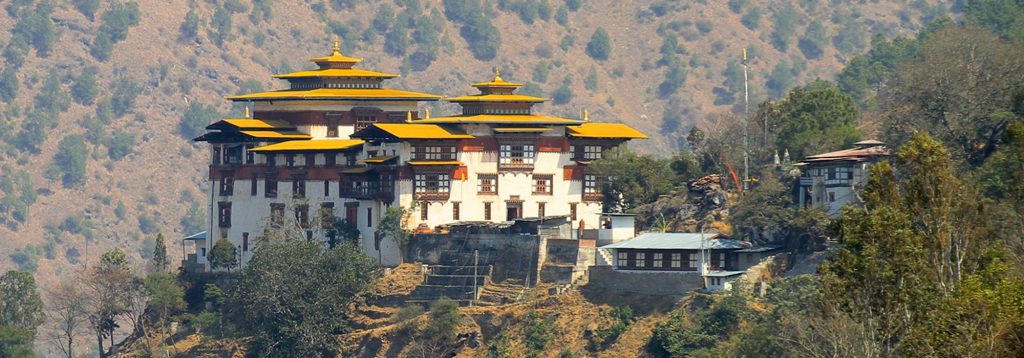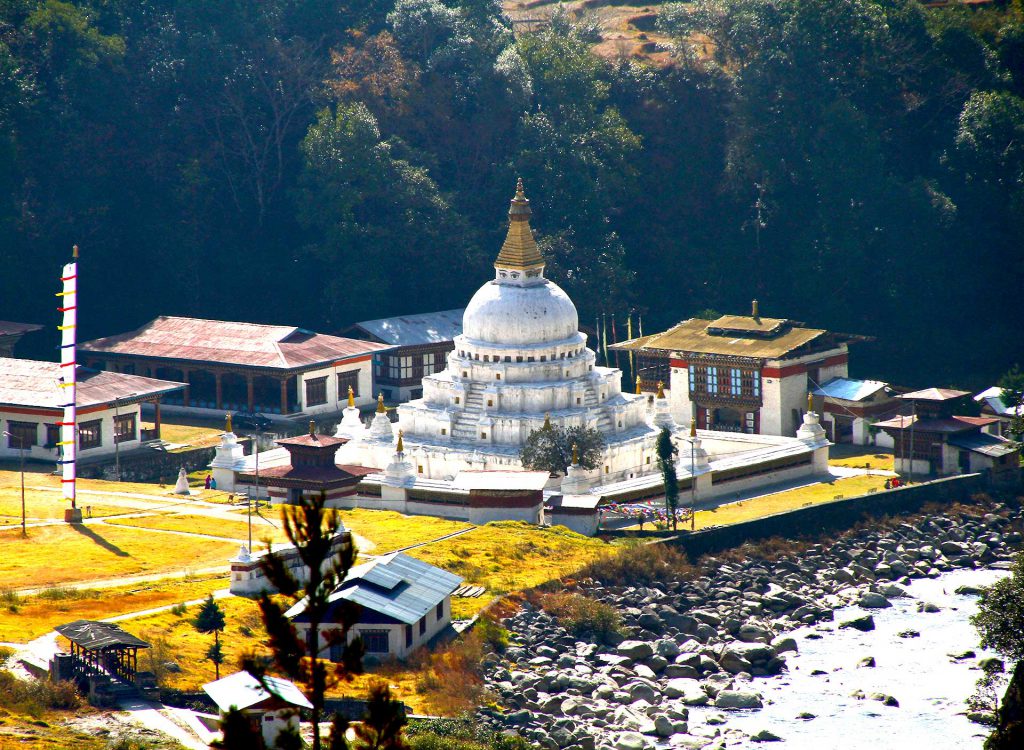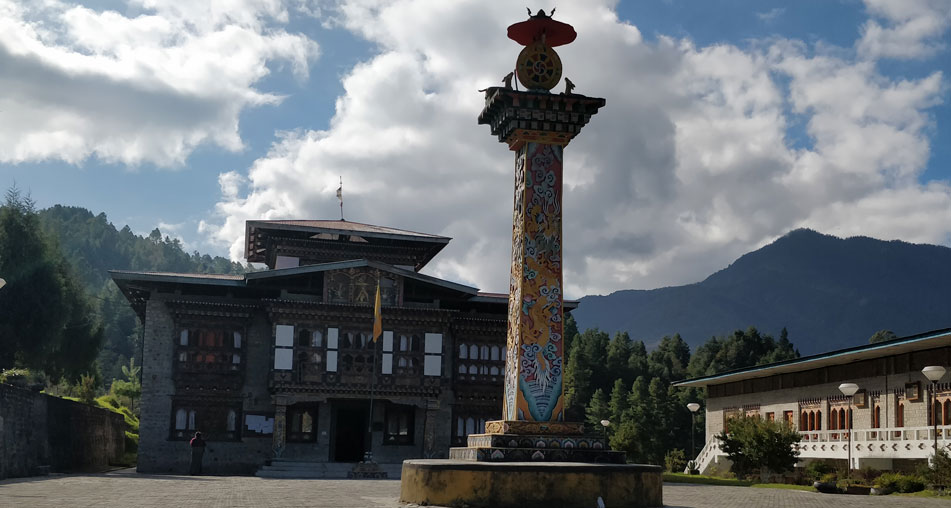
In the northeastern corner of Bhutan lies the ancient region of Kurtoe or Lhuntse as it is known today. It is the ancestral home of our Kings and hosts several of the sacred sites of pilgrimage in the country. It is located 77km from Mongar (3 hours’ drive) and is one of the most isolated districts in Bhutan.
The landscape is spectacular with stark cliffs towering above river gorges and dense coniferous forests. The region is famous for its weavers and their distinctive textiles are generally considered to be the best in the country. Kurtoep women are especially adept at weaving a textile called Kishuthara. Eastern Bhutanese culture is distinctive in its high alcohol consumption in relation to other parts of Bhutan. Ara, the traditional alcohol of Bhutan, is most often home made from rice or maize, either fermented or distilled. It may only be legally produced and consumed privately.
Some of the attractions in the region include the Lhuntse Dzong, Khoma village (famous for weaving), Singye Dzong, the beyul Khenpajong and the Phunying Pass. The textile products of Khoma village in Lhuntse are stated to be the best in the country. The weaving handicraft looms are common sight in almost every household.
Most of Lhuntse district is part of the environmentally protected areas of Bhutan. The district contains parts of Wangchuck Centennial Park in the north, Thrumshingla National Park in the south and Bumdeling Wildlife Sanctuary in the east. These three parks are connected by biological corridors that crisscross the central and southern regions of the district.

Trashigang Dzong or ‘The Fortress of the Auspicious Hill’ was built in 1659 to defend against Tibetan invasions. This imposing fortress is strategically situated high atop a spur overlooking the Dangmechu River.
According to legend, it is said that upon seeing the Dzong, invading Tibetan armies remarked that the Dzong was “not on the ground. It is a Sky Dzong” before retreating. It has been the political stronghold of Eastern Bhutan for over 300 years.
Mount Meru is the site of the palace of the Druk Chhoglay Namgyal, which translates to “Victory of Bhutanese over enemies in all directions”. It is accessible only from the north, via a narrow road, paved by blasting through the cliff-side. Due to its location , Trashigang Dzong is one of the most strategically placed Dzongs in Bhutan. The present Dzong was enlarged by Dzongpon Dopola in 1936.

Chorten Kora, Yangtse. 1750m altitude. Three minutes from the town. Built over a period of 12 years around 1740 by Lama Ngawang Loday. The chorten was modelled after Boudhanath stupa in Nepal, which the lama carved out of a radish. Differences between the Chorten Kora and Boudhanath stupas are reportedly due to distortion of the model as it shrunk on the return journey of the lama to Bhutan. The pinnacle was originally carved out of a huge stone, which Lama Shacha Gyalpo wanted to replace with a gilded cupola. No one could think of a way to bring down the pinnacle. So, the lama performed prayers during the day and the stone miraculously descended at night. It is still found beside the chorten. Locals believe that an 8 year Dakini girl was sealed alive of her own free will in the chorten as an offering from the Dakpa people of Tawang, Arunachal Pradesh. Dakpas come for circumambulation on the 15th day of the 1st month. Bhutanese celebrate their Kora on the 30th of the 1st Bhutanese month.

Trashiyangtse Institute of Zorig Chusum (TIZC) was established in 2nd June 1997 in eastern bhutan, under the then National Technical Training Authority (NTTA). It is located 2kms away from town and just above the general hospital.The institute was stablished mainly with the objective to promote and preserve the thirteen traditional arts and crafts skills of Bhutan and to facilitate increased access in learning zorig skills by bhutanese youths..
